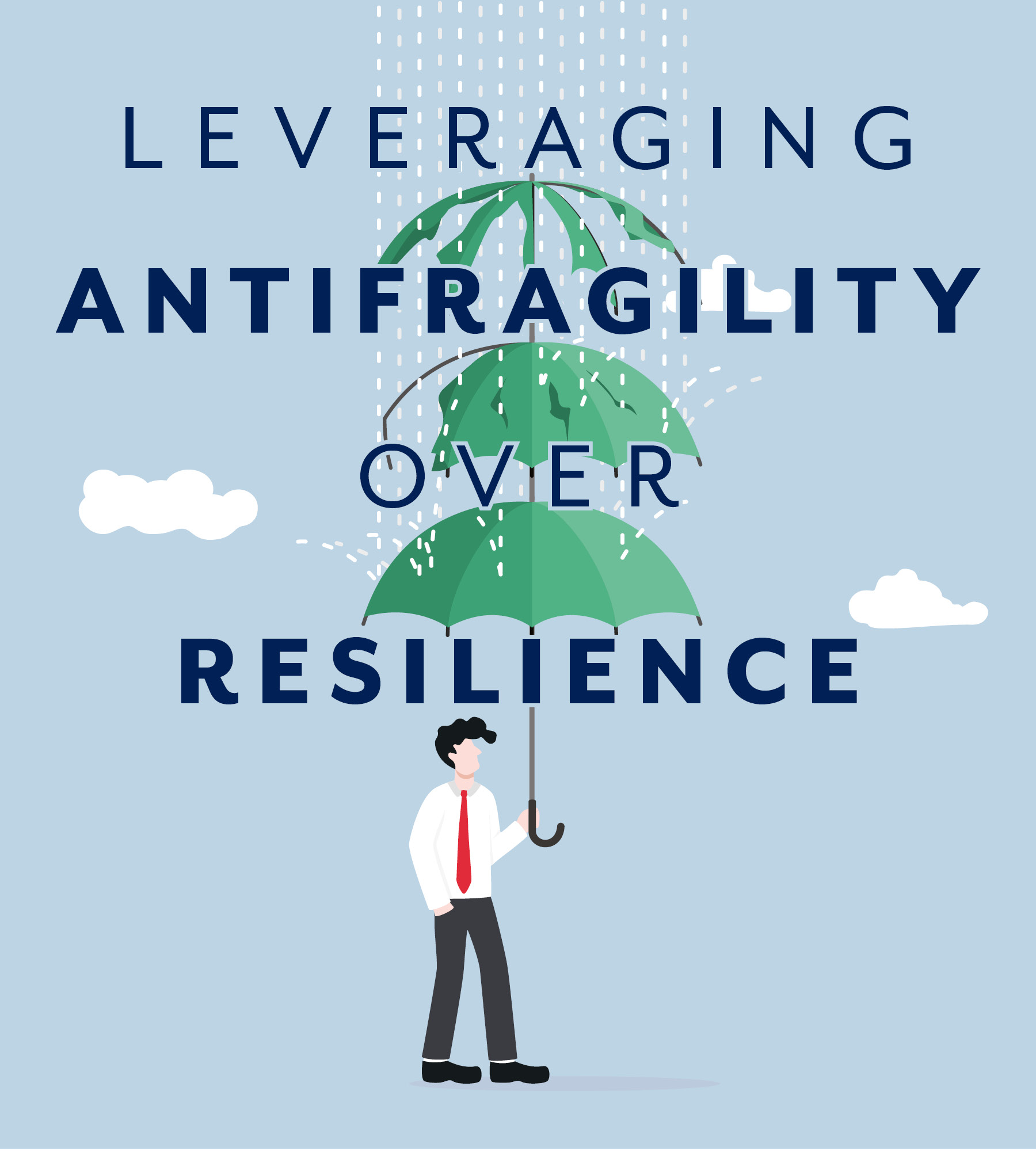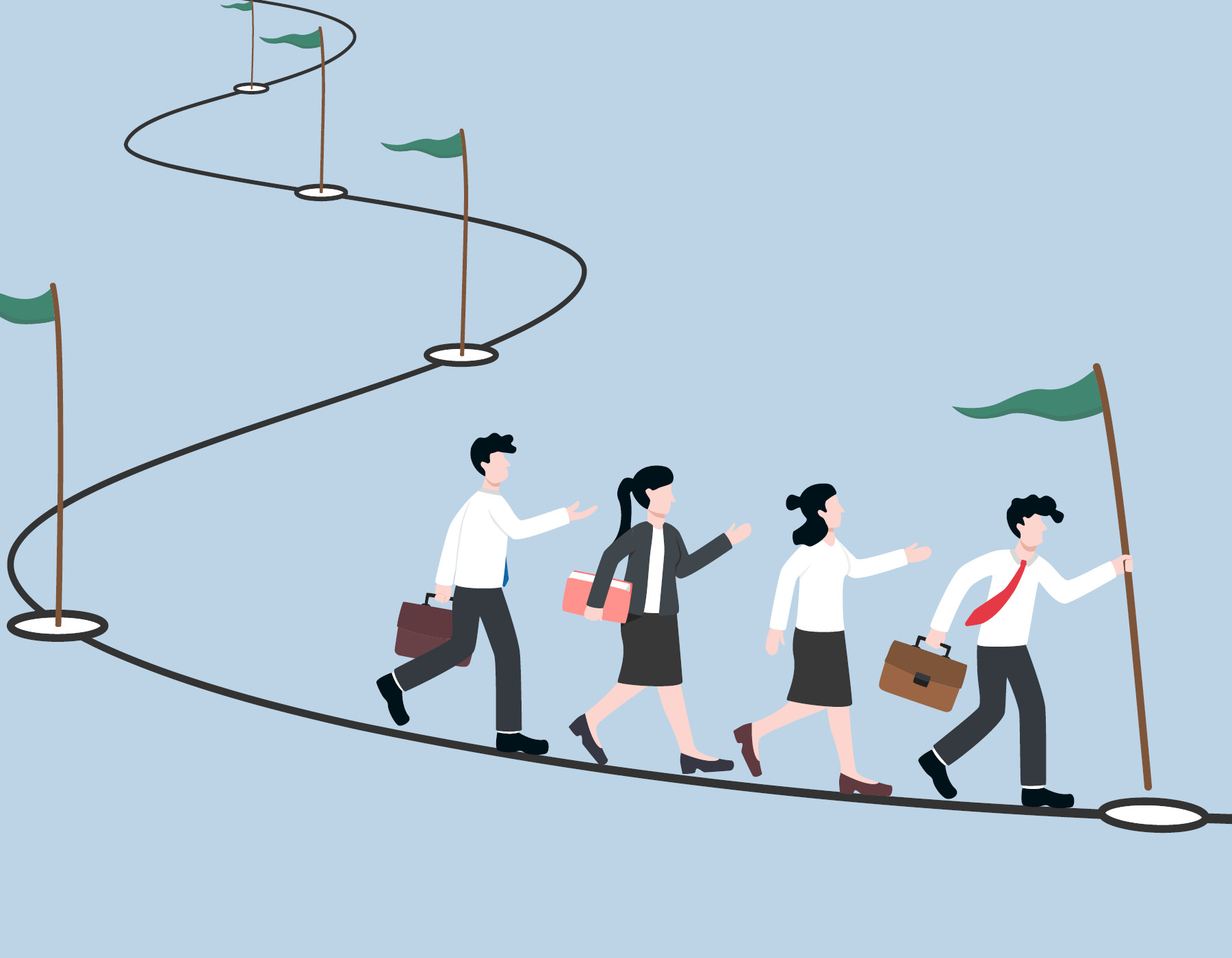Language
You can read the magazine in one of the following languages
Geolocation
You can read the global content or the content from your region

In 2012, the statistician and essayist Nassim Nicholas Taleb introduced the concept of antifragility to the world through his book, Antifragile: Things That Gain From Disorder. He described it as a phenomenon where systems or organisms not only withstand stressors but actually thrive and improve in the face of volatility and uncertainty.
Antifragility, in the context of the typical CEO, implies an ability not just to endure challenges but to grow and benefit from them. Rather than merely bouncing back or withstanding stress, antifragile leaders and organizations embrace volatility as an opportunity for growth and innovation. A critical skill in today’s corporate reality.
As the relevance of VUCA – volatility, uncertainty, complexity, and ambiguity – grows in the business world, CEOs will need to adopt this framework more frequently if they hope to navigate the rapid changes characterizing today’s markets adeptly. Such a pivot in mindset is particularly vital in dynamic business sectors where traditional models are constantly being disrupted, requiring swift and agile leadership decisions.
Beyond those challenges to the business itself, CEOs and their teams are also experiencing the fallout of increasingly high VUCA environments and their ripple effects on life outside of work.
A 2018 study revealed 51.3 percent of executives experience high-stress levels, with work-related stress being the primary stressor, followed by family related and health-related stress, and work–life balance issues.

Strategies focusing on wellbeing, vision, understanding, clarity and antifragility are critical in fostering a resilient and progressive corporate culture and mindset.
Another noted that 90.1 percent of the study subjects experienced stress phases that are considered chronic stress. Chronic stress in executives is linked to impaired cognitive performance and a hyper reactive autonomic nervous system. The fallout isn’t limited to C-suite executives, though. Work-related stress among C-level executives has a direct impact on employee productivity as well.
By adopting an antifragile mindset, CEOs can better combat these challenging trends for their business and those who make it work. In doing so, they can uniquely position themselves to harness VUCA challenges and the subsequent stress as catalysts for innovation and organizational growth.
Strategies focusing on wellbeing, vision, understanding, clarity and antifragility are critical in fostering a resilient and progressive corporate culture and mindset, empowering leaders to turn potential threats into avenues for substantial development. This represents a paradigm shift in CEO leadership, encouraging leaders to endure and harness volatility and uncertainty for innovation and growth.
While this concept has found application in various fields, from risk analysis to urban planning, its potential in CEO leadership and organizational operations in general remains largely untapped. Given the pressures placed upon CEOs, there’s no better time than today to start understanding and developing antifragile behaviors, policies, and mindsets.
The critical question, then, is how can CEOs start doing that? By developing a mindset for antifragility.
The oak tree is known for its strength and resilience. It stands tall and sturdy, weathering storms and enduring through the seasons. It symbolizes stability and steadfastness in the face of adversity. While the oak tree may sway in the wind and lose some branches, it remains deeply rooted and grows stronger over time.

Once leaders have developed an antifragile mindset and flexibility, they can begin to implement practical strategies for building deeply rooted, flexible, antifragile organizations.
In contrast, the bamboo is known for its flexibility and adaptability. It bends with the wind, gracefully adapting to changes in its environment. Despite its slender appearance, bamboo is incredibly strong and resilient. It can withstand extreme weather conditions and even bounce back after being bent to the ground. Bamboo represents resilience through flexibility, showing that bending without breaking is a powerful form of strength.
In the context of CEO leadership and organizational psychology, the comparison between the oak tree and bamboo highlights two different approaches to resilience. The oak tree embodies resilience through stability and endurance, while the bamboo represents resilience through adaptability and flexibility. Both metaphors offer valuable insights into how leaders and organizations can navigate challenges and thrive in dynamic environments.
In research, we call this skill psychological flexibility – a willingness to embrace various experiences and perspectives while staying grounded in core values. This flexibility allows leaders to approach stressors as opportunities for growth rather than threats.
Once leaders have developed an antifragile mindset and flexibility, they can begin to implement practical strategies for building deeply rooted, flexible, antifragile organizations. All of which fall into the three more general categories of:
• Wellbeing or building the good for themselves and their people.
• Resilience or being the oak/bamboo strategically and in ways that facilitate growth.
• Performance or understanding core skills and approaches that can help CEOs and their people be more effective.
Within those general categories, more specific examples include:
• Embracing volatility as an opportunity for growth. Instead of avoiding risks, CEOs should engage in calculated risks that foster beneficial volatility.
• Diversify by spreading revenue sources, customer bases, and offerings to become more adaptable and resilient to shocks.
• Learn from failure by viewing setbacks as learning opportunities to foster a culture of innovation and resilience.
• Develop agility and adaptability in navigating uncertain environments. Flexibility in business models allows for swift responses to market shifts.
• Continuous innovation keeps organizations ahead of the curve.
• Do the work to maintain relationships and your network. Antifragility is often highly social or communal. Building a strong network provides support and resources during turbulent times.
• Prioritizing wellbeing, fostering a supportive environment, and maintaining work-life balance contribute to a resilient and antifragile enterprise.
• Offer routes for colleagues and employees to learn wellbeing, resilience and performance optimization skills to improve their psychological robustness.
Antifragility offers CEOs a powerful strategy for navigating the unpredictable terrains of modern business. By harnessing the principles of antifragile operating, leaders can become better equipped to withstand disruptions and convert challenges into opportunities for significant growth and development.
As the corporate landscape evolves, the CEOs who thrive will transform volatility into a catalyst for innovation and view uncertainty as a pathway to outpace competition and foster a resilient and growth-oriented organizational culture. This approach doesn’t just prepare companies to survive future shocks; it positions them to flourish, making antifragility an essential element of contemporary leadership arsenals.

Nick Holton
Contributor Collective Member
Nick Holton’s work focuses on helping individuals, teams, businesses and organizations become better versions of themselves through the application of the cutting-edge science of human flourishing – a synergistic development of both peak performance and overall wellbeing and fulfillment. Nick currently serves as a private coach and consultant, working with individuals and groups ranging from professional athletes, educational institutions and Fortune 500 businesses. He is a keynote speaker and also runs a podcast alongside the Human Flourishing Program at Harvard. For more information visit https://www.theantifragileacademy.com/